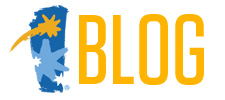When it comes to financial downers, there’s nothing worse than credit card debt. It makes it feel like we’re taking one step forward and two steps back in terms of our finances, and is the darkest of clouds hanging over our heads.
It can be easy to push it aside and pretend it doesn’t exist, but facing it head-on is the only ways to truly tackle it. If you’ve racked up a lot of debt, paying it off is going to take time and patience, but there are still tricks to paying it off faster — so you can get back to going out for happy hour margaritas without guilt.
There are 3 main methods that are recommended to pay off your credit card debt based on what fits your current finances. We’re going to break them down and then dive into a couple other tricks to help tackle that debt:
1. The Avalanche Method
With the avalanche method, you pay off your credit card debt in order from cards with the most interest to the least. Here’s how it works:
You make the minimum payment on each of your credit cards, and then put as much money as possible toward the rest of your debt — starting with the debt with the highest interest. You continue to repeat until your debt is paid off.
For this, it’s vital to always pay the minimum amount required for each account. The pro of this method is that it will help you pay off debt with as little interest as possible, but the downside is that it will take you longer to see a big dent of progress in your debt.
How to start
Step 1: Figure out how much money you can afford to pay off on all your debt now, then make a list of all your current balances.
Step 2: Make the minimum payment required on all of your cards.
Step 3: Put the rest of the money left in your set budget toward the debt with the highest interest rate.
Step 4: Once that’s paid off, repeat.
2. The Snowball Method
The debt snowball is when you pay off debt in order from your smallest debt to your largest. You make the minimum payments on all of your debts, except for your smallest one, which you pay as much as possible on. Then you repeat in order of debt from smallest to largest until your debt is gone.
The biggest perk of the snowball method is that you feel like you’re making a lot of progress in your debt, because full amounts are getting checked off the list. The downside is that it ignores interest rates, so you could be racking up higher interest rates than you would with other methods.
How to start
Step 1: Figure how much you can afford to pay off on your debt, then list exactly how much you owe on each card from the smallest debt to the largest.
Step 2: Make the minimum payments on all of your cards — except the smallest. Pay the smallest card off in full (or the maximum you can afford at the time).
Step 3: Repeat on all debts from smallest to largest.
3. The Snowflake Method
The debt snowflake method focuses on utilizing your smaller savings to pay off your debt. You use your small, day-to-day savings to make your way to zero debt. For example, if you have a side hustle and receive a payment outside of your normal paycheck, you immediately put the entirety of it toward your debt. The small, continual payments add up faster than you’d think.
How to start
Step 1: Make a list of of all of your debts and how much you can afford to pay off now.
Step 2: Pay all monthly minimums on each card.
Step 3: Gather day-to-day savings and extra funds, and figure out how much you should be expecting that month. In addition to the monthly minimums, start putting those small earnings toward your debt immediately.
4. Consider a Credit Card Balance Transfer
A balance transfer is a simple concept: You apply for a new card with a lower interest rate, then move your balance to it from the old card. In effect, you’re using one card to pay off another, but you’re getting a lower interest rate in the process. As you consider your options, keep these questions in mind:
- Will the amount you save in interest be higher than the balance transfer fee?
- Can you pay off the balance you’re transferring during the 0% period?
Once you’ve transferred your balance, make a plan to pay enough each month to get that debt to zero during the interest-free period — even if it means skimping on your lifestyle for a while. Paying off your debt should be the point of the balance transfer. You can apply the money you save in interest to your balance to get you out of debt faster. Don’t just move debt from one card to another and then run up your balance again. That’s the debt treadmill, and it’s hard to get off.

What should you do with the old card? Having more open lines of credit with a good payment history on your credit report generally is good for your credit score, so it helps to keep the account open. Just make sure not to get back in the habit of racking it back up.
5. Consolidate Multiple Credit lines into a Single Payment
Dealing with credit card debt can be seriously stressful. If you’re struggling to get your balances under control, you may have considered consolidating your cards into one low-interest loan. It might be a good idea to tap into your equity options (like home or car) to pay down other types of debt, especially high-interest credit card balances. This makes it easier to track and make payments…meaning you only have to deal with one monthly payment!
Of course, as with any financial planning strategy, do your homework. Work with a financial advisor, who can help you understand these strategies further and make sure you’re making the best decisions based on your current financial situation and financial goals.




